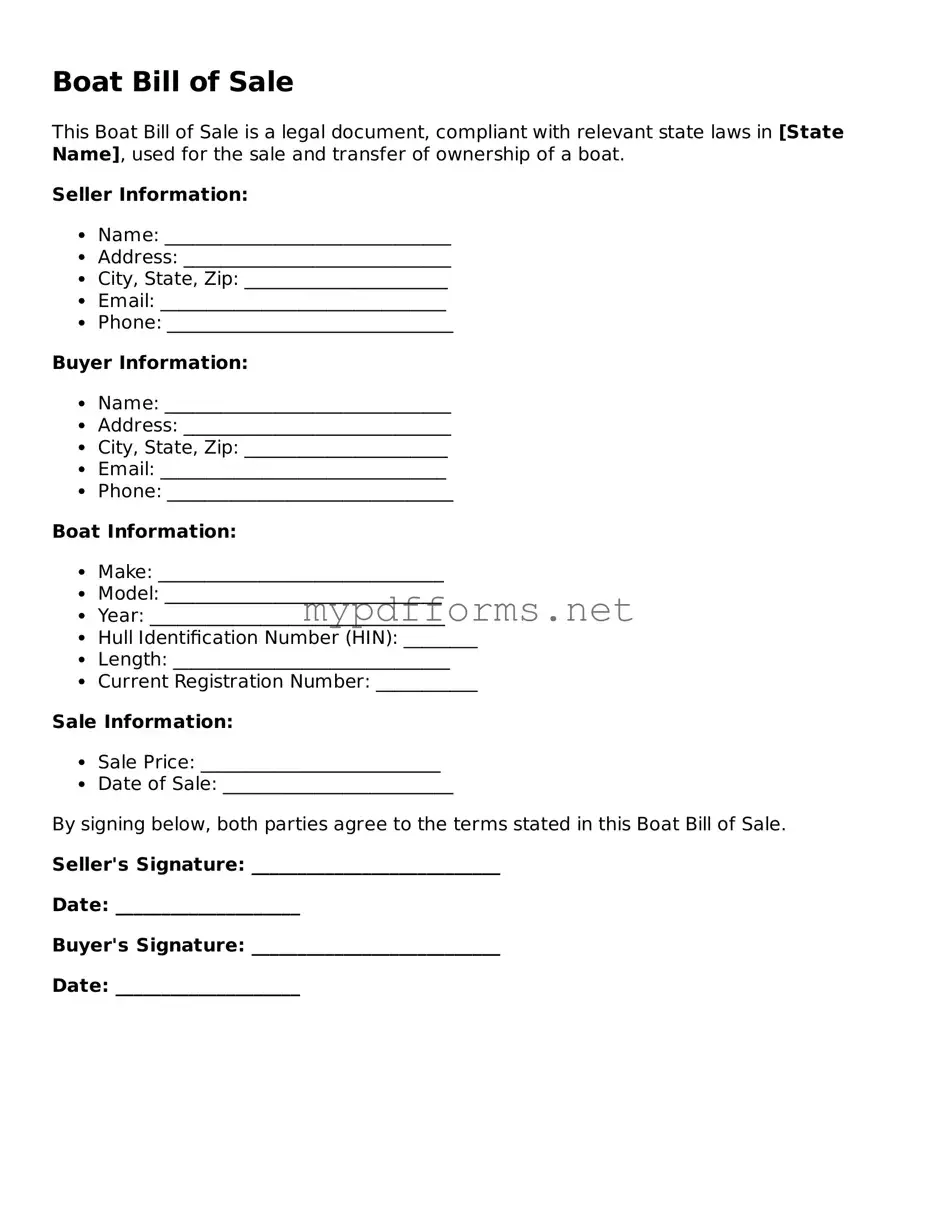Boat Bill of Sale Template
A Boat Bill of Sale is a legal document that serves as proof of the transfer of ownership for a boat from one party to another. This form outlines essential details about the vessel, including its make, model, and identification number, as well as the buyer and seller's information. To ensure a smooth transaction, consider filling out the form by clicking the button below.
Modify Document Here
